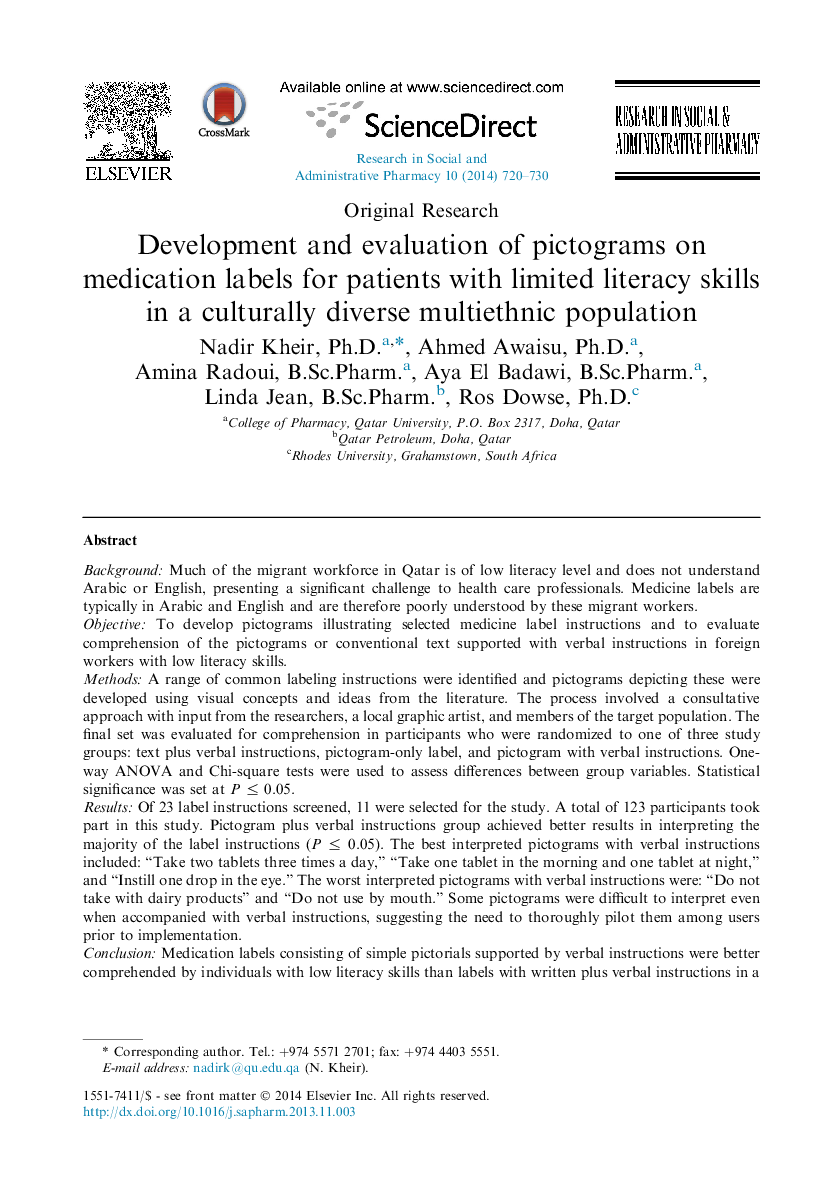| Article ID | Journal | Published Year | Pages | File Type |
|---|---|---|---|---|
| 2508414 | Research in Social and Administrative Pharmacy | 2014 | 11 Pages |
BackgroundMuch of the migrant workforce in Qatar is of low literacy level and does not understand Arabic or English, presenting a significant challenge to health care professionals. Medicine labels are typically in Arabic and English and are therefore poorly understood by these migrant workers.ObjectiveTo develop pictograms illustrating selected medicine label instructions and to evaluate comprehension of the pictograms or conventional text supported with verbal instructions in foreign workers with low literacy skills.MethodsA range of common labeling instructions were identified and pictograms depicting these were developed using visual concepts and ideas from the literature. The process involved a consultative approach with input from the researchers, a local graphic artist, and members of the target population. The final set was evaluated for comprehension in participants who were randomized to one of three study groups: text plus verbal instructions, pictogram-only label, and pictogram with verbal instructions. One-way ANOVA and Chi-square tests were used to assess differences between group variables. Statistical significance was set at P ≤ 0.05.ResultsOf 23 label instructions screened, 11 were selected for the study. A total of 123 participants took part in this study. Pictogram plus verbal instructions group achieved better results in interpreting the majority of the label instructions (P ≤ 0.05). The best interpreted pictograms with verbal instructions included: “Take two tablets three times a day,” “Take one tablet in the morning and one tablet at night,” and “Instill one drop in the eye.” The worst interpreted pictograms with verbal instructions were: “Do not take with dairy products” and “Do not use by mouth.” Some pictograms were difficult to interpret even when accompanied with verbal instructions, suggesting the need to thoroughly pilot them among users prior to implementation.ConclusionMedication labels consisting of simple pictorials supported by verbal instructions were better comprehended by individuals with low literacy skills than labels with written plus verbal instructions in a language that the individual did not understand. Further, pictogram-only labels were the least comprehended types of medicine labels among the participants.
